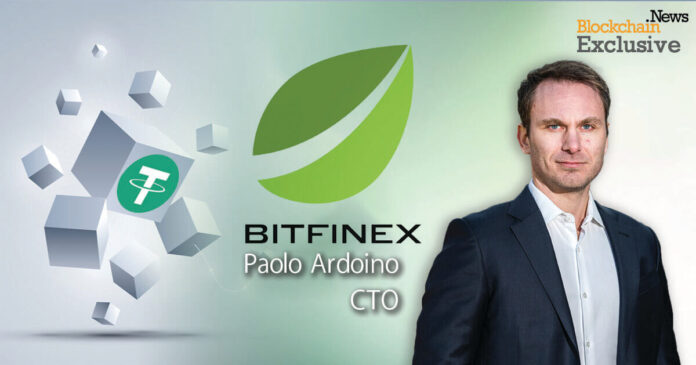Iris Coleman
Sep 15, 2024 12:05
Two years post-Merge, Ethereum’s transition to Proof of Stake faces challenges from Layer 2 solutions and faster blockchains like Solana and Avalanche.
Two years after Ethereum’s transition to a Proof of Stake (PoS) consensus mechanism, known as the Merge, the network has faced significant challenges. Despite initial expectations, Ethereum has struggled with high transaction costs and network congestion, while alternative Layer 2 solutions and faster blockchains like Solana, Avalanche, Base, and Aptos have gained traction, according to blog.bitfinex.com.
Has the Merge had a Negative Overall Effect on Ethereum?
Since the Merge on September 15, 2022, Ethereum’s anticipated benefits, such as improved scalability and reduced fees, have not materialized as swiftly as expected. The network’s high transaction costs and congestion have driven users and developers towards Layer 2 solutions like Optimism, Arbitrum, and ZK-rollups, which offer faster and cheaper transactions. Additionally, newer blockchains such as Solana, Sui, and Aptos provide higher throughput and lower fees, further eroding Ethereum’s market share.
The muted impact of Ethereum spot ETFs has also dampened market sentiment. The launch of these financial products in the US this year did not generate the expected institutional inflows, resulting in underperformance relative to Bitcoin. The migration of economic activity to Layer 2 solutions and competing blockchains has led to a noticeable decline in Ethereum’s on-chain activity and network fees, which are critical revenue sources for validators.
Can Ethereum Remain Competitive Amongst Faster, More Efficient Blockchains?
Layer 2 solutions and competing blockchains have become attractive alternatives for users seeking lower transaction fees. Platforms like Arbitrum, Optimism, and zkSync enable cheaper and faster transactions while maintaining a connection to Ethereum’s security. Competing blockchains like Solana and Avalanche offer similar DeFi capabilities but with even lower fees and faster transaction speeds.
The proliferation of EVM-compatible chains and cross-chain bridges has made it easier for users to move liquidity between Ethereum and alternative blockchains. This fluidity has fragmented Ethereum’s liquidity, reducing its dominance in DeFi and DApp activity. As a result, users are increasingly exploring alternatives that offer similar services but with enhanced scalability and cost-effectiveness.
It’s Not All Doom and Gloom: A Bright Future Still Awaits Ethereum
Despite these challenges, Ethereum remains the second-largest cryptocurrency by market capitalization. Its established reputation and influence ensure it remains a key player in the crypto ecosystem. Ethereum’s highly active developer community continues to drive innovation, with a roadmap packed with upgrades aimed at improving scalability, reducing fees, and enhancing the user experience.
Ethereum’s transition to PoS through the Merge showcased its developers’ commitment to evolving the network. The upcoming scalability improvements, particularly through sharding and continued Layer 2 development, aim to enhance Ethereum’s transaction throughput and address the primary concerns driving users to alternative blockchains.
Although Ethereum ETFs have had an underwhelming start, they offer new avenues for traditional investors to gain exposure to Ethereum. As the market matures and investor confidence strengthens, these ETFs have the potential to attract more interest.
Looking ahead, Ethereum’s foundational infrastructure and commitment to innovation position it well for future growth. If it succeeds in implementing its upcoming upgrades, Ethereum could regain its prominence in the blockchain space, attracting developers, users, and liquidity back to its network.
Image source: Shutterstock
Credit: Source link






















 Bitcoin
Bitcoin  Ethereum
Ethereum  XRP
XRP  Tether
Tether  Solana
Solana  USDC
USDC  Dogecoin
Dogecoin  Cardano
Cardano  Lido Staked Ether
Lido Staked Ether  TRON
TRON  Wrapped Bitcoin
Wrapped Bitcoin  Chainlink
Chainlink  Wrapped stETH
Wrapped stETH  Avalanche
Avalanche  Sui
Sui  Stellar
Stellar  Litecoin
Litecoin  Toncoin
Toncoin  Shiba Inu
Shiba Inu  Hedera
Hedera  LEO Token
LEO Token  USDS
USDS  Hyperliquid
Hyperliquid  Polkadot
Polkadot  WETH
WETH  MANTRA
MANTRA  Bitcoin Cash
Bitcoin Cash  Bitget Token
Bitget Token  Ethena USDe
Ethena USDe  Wrapped eETH
Wrapped eETH  Uniswap
Uniswap  Monero
Monero  NEAR Protocol
NEAR Protocol  Pepe
Pepe  WhiteBIT Coin
WhiteBIT Coin  Aave
Aave  Bittensor
Bittensor  Ondo
Ondo  Aptos
Aptos  Internet Computer
Internet Computer  Dai
Dai  Official Trump
Official Trump  Ethereum Classic
Ethereum Classic  Mantle
Mantle  Tokenize Xchange
Tokenize Xchange  OKB
OKB  Gate
Gate  sUSDS
sUSDS  Sonic (prev. FTM)
Sonic (prev. FTM) 
